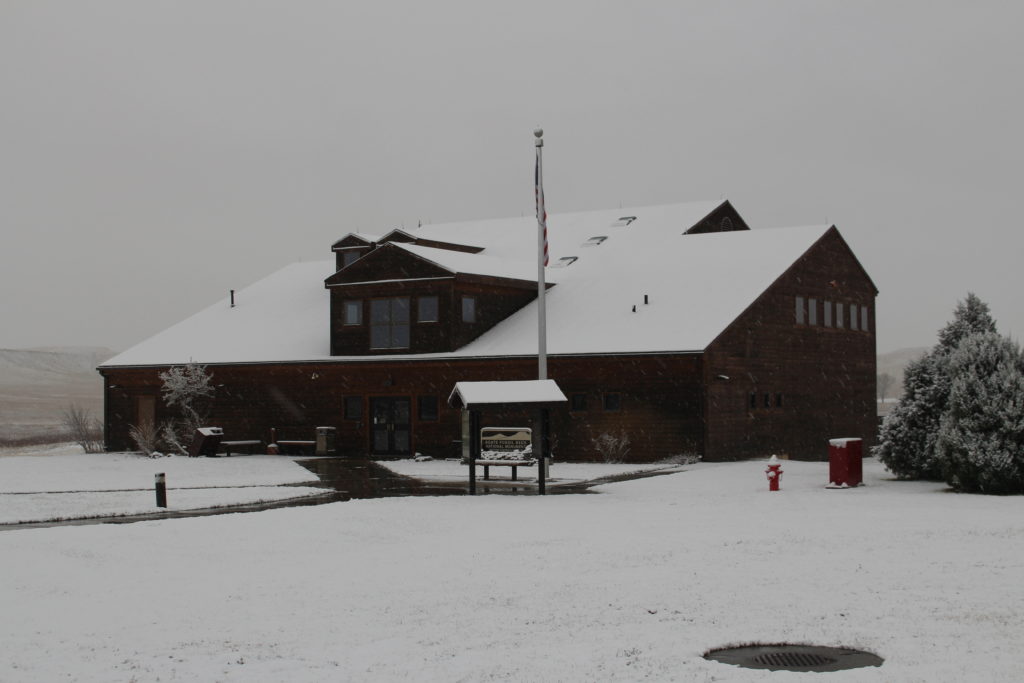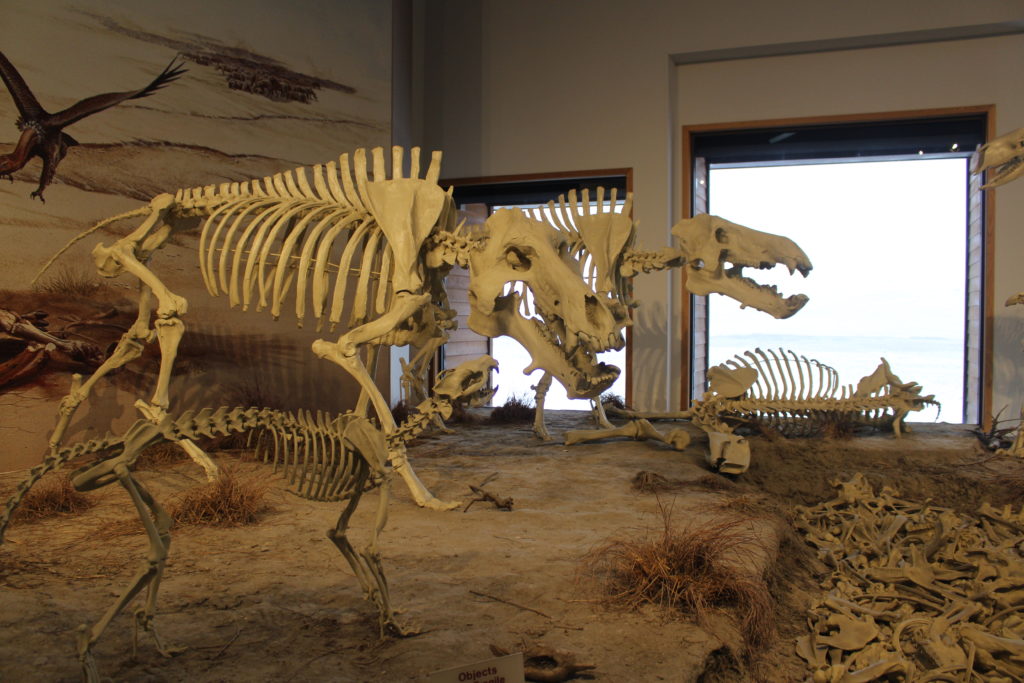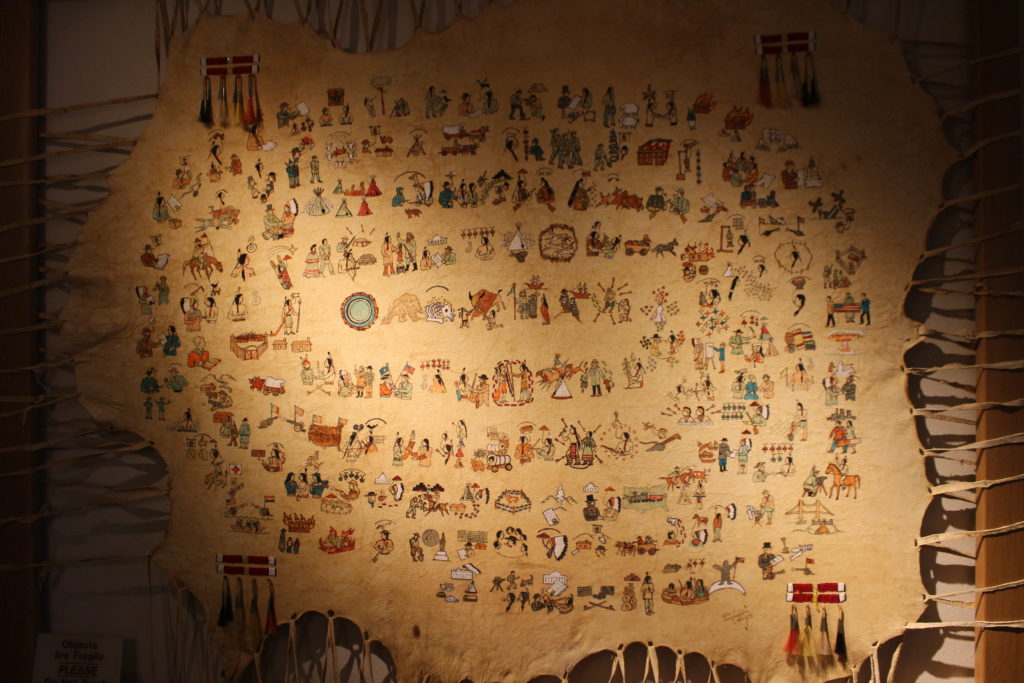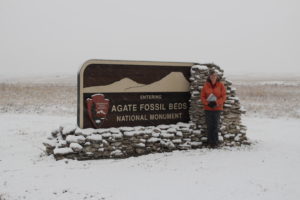 About 20 million years ago drought struck the western Nebraska plains. Deprived of food, hundreds of animals died around a few shallow water holes. Time buried their skeletons beneath layers of silt and sand. Today Agate Fossil Beds National Monument preserves one of these ancient waterholes with its hundreds of fossilized skeletons.
About 20 million years ago drought struck the western Nebraska plains. Deprived of food, hundreds of animals died around a few shallow water holes. Time buried their skeletons beneath layers of silt and sand. Today Agate Fossil Beds National Monument preserves one of these ancient waterholes with its hundreds of fossilized skeletons.
The Agate Fossil Beds National Monument is not known for agates but for its fossils. Its name comes from the Agate Springs Ranch owned by James and Kate Cook. They bought Agate Springs Ranch in 1887 and invited scientists from Yale University and the American Museum of Natural History to examine the fossil beds. James and Kate Cook were also good friends with the Oglala Lakota in the area who often told them of interesting fossil finds. The Cook family donated the land to the National Park service in 1965.
The bones found at Agate Fossil Beds are among some of the best specimens of Miocene mammals. You can see the recreated skeletons in the museum. Tom and I saw:
-
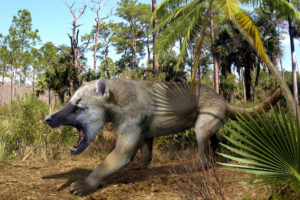
Reconstruction of a bear dog Miohippus, an ancestor of the modern horse,
- Menoceras, a pony-sized rhinoceros,
- Amphicyon, a bear dog,
- Daeodon, a giant pig-like ungulate,
- Stenomylus, a gazelle-like camelid, and
- Palaeocastor, land beavers that dug large corkscrew-shaped burrows (Daemonelix).
Tom’s favorite was the bear dog. It looks pretty scary in the reconstruction. It was strong and about eight feet tall with a large, heavy tail, thick neck, robust limbs, and teeth like a wolf. I certainly wouldn’t want to meet it while I was walking in the tall grass of the prairie.
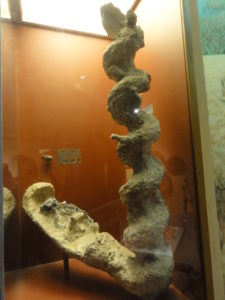 I thought the Daemonelix was fascinating. The name means Devil’s corkscrew and comes from a time before the scientists figured out what it was. Turns out is the fossilized burrow of giant beavers. The tree-sized, screw-shaped Daemonelix are the most interesting fossils I have ever seen.
I thought the Daemonelix was fascinating. The name means Devil’s corkscrew and comes from a time before the scientists figured out what it was. Turns out is the fossilized burrow of giant beavers. The tree-sized, screw-shaped Daemonelix are the most interesting fossils I have ever seen.
Tom and I spent all our time at Agate Fossil Beds in the Visitors Center. It was snowing like crazy when we entered and didn’t stop while we were there. We planned to hike the Fossil Hills Trail but just looking at the snow made me cold. Instead we watched the movie and spent a long time looking at the Cook collection of Oglala Lakota artifacts. We also talked to the ranger for a while. We were the only visitors and she seemed happy to have someone around.

